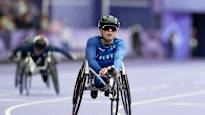The State Sports Council clarified the state of Finnish para sports with an evaluation. According to the assessment, there are problems in, among other things, resources, management and valuation.
Para sports are not always seen as elite sports activities in their own right. Although the status and appreciation of para sports have improved in recent years, there are still many challenges.
The information comes from the Organization and State of Para-Sports in Finland 2024 assessment commissioned by the State Sports Council, which for the first time analyzed the overall picture of Finnish para-sport.
Para athletes and coaches, representatives of national organizations and sports federations, and sports academies were involved in the evaluation.
The assessment published on Thursday shows that many players in the field are worried about the future of Finnish para sports.
According to the publication, there are at least more than 700 international-level para-athletes and more than 2,000 national-level para-athletes in Finland, but more would be needed. Although Finland has achieved many Paralympic medals in recent decades, the number of both medals and athletes has decreased.
Based on the assessment, the current efforts to recruit new para-athletes are not sufficient to cover the future needs of para-elite sports. There is also a big lack of coaches and coach training.
According to the publication, in the future recruitment should be expanded beyond traditional sports organizations and expertise should be developed.
According to the evaluation, expertise would be developed, for example, by increasing para-sports expertise as part of all coach trainings, by intensifying cooperation with athletes from different sports and without disabilities, and by including para-athletes better in decision-making concerning them.
Integration has progressed at different paces in sports federations
Based on the evaluation, the management of para sports is perceived as an unclear entity, where the roles of different actors and the division of responsibilities are not clear.
According to the assessment, management should move from the level of target documents and constant role discussions to actor-specific acceptance of responsibility and commitment and to the level of measures.
The assessment shows that para sports is reflected in the strategy of only a few sports federations. Parasport has been integrated into the activities of different sports federations at different paces, and there have been no common goals or guidelines for the integration.
Based on the report, the financial investments of the federations are mainly aimed at covering competition activities, and only a small part of them is aimed at the development of grassroots activities and coach training, as well as recruiting athletes.
According to the publication, sports association integration could be strengthened with earmarked and tiered funding according to the level and quality of operations. In addition, it is proposed that three to five priority sports be selected in Finland, in which future successful projects would be built.
The evaluation also recommends that sufficiently ambitious, concrete and assessable goals be set for para sports.
The matter will be discussed further on Thursday, September 12 at 18:02 on Radio Suomen Urheiluilla.
